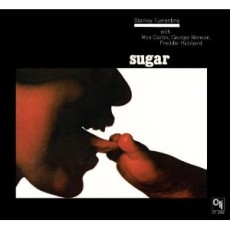
Daily Dose Of jazz…
Stanley William Turrentine was born in the Hill District of Pittsburgh, Pennsylvania on April 5, 1934 into a musical family. His father, Thomas Turrentine, Sr., was a saxophonist with Al Cooper’s Savoy Sultans, his mother played stride piano, and his older brother Tommy Turrentine became a professional trumpet player.
Turrentine began his prolific career with blues and rhythm and blues bands, and was at first greatly influenced by Illinois Jacquet. In the 1950s, he went on to play with the groups of Lowell Fulson, Earl Bostic and at the turn of the decade with Max Roach.
1960 saw Stanley marrying organist Shirley Scott and the two frequently played and recorded together. During this decade he also started working with organist Jimmy Smith, making several soul jazz recordings both with Smith and as a leader.
By the 1970s, after his professional and personal divorce from Scott, Turrentine left hard bop and soul jazz for jazz-fusion. He signed with Creed Taylor’s CTI label and released his debut album “Sugar” that became one of his biggest successes and a seminal recording for the label. He worked with Freddie Hubbard, Milt Jackson, Bob James, Richard Tee, Idris Muhammad, Ron Carter and Eric Gale, to name a few.
In the 80s and 90s Stanley returned to soul jazz though throughout his career along with his CTI releases, he recorded for Blue Note, Fantasy, Prestige, and Impulse record labels. Tenor saxophonist, bandleader and composer Stanley Turrentine passed away from a stroke in New York City on September 12, 2000.
More Posts: saxophone
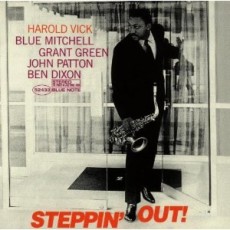
Daily Dose Of Jazz…
Harold Vick was born on April 3, 1936 in Rocky Mount, North Carolina. His uncle, reed player Prince Robinson gave him a clarinet when he was thirteen and two years later he switched to the tenor saxophone. He rose to prominence playing with organ combos in the mid-60s performing and recording with Jack McDuff, Jimmy McGriff and Big John Patton among others.
During this period in his career Harold also performed and recorded as a leader releasing eight albums between 1963 and 1977. He would work with the likes of Blue Mitchell, Ben Dixon, John Patton, Bobby Hutcherson, Walter Bishop Jr., Grady Tate and Teddy Charles, just to name a few. Also working as a sideman he performed and recorded with Grant Green, Shirley Scott, Nat Adderley, Aretha Franklin, Dizzy Gillespie, Mercer Ellington, Sarah Vaughan, Billy Taylor, Donald Byrd, Horace Silver, Ray Charles and Gene Ammons.
He played in films such as “Stardust Memories” and “Cotton Club”, in which he played a musician. He also was in the Spike Lee film “School Days” and was featured on the soundtrack for “She’s Gotta Have It”.
Harold Vick, tenor saxophonist and flautist in the hard bop and soul jazz genres passed away on November 13, 1987.
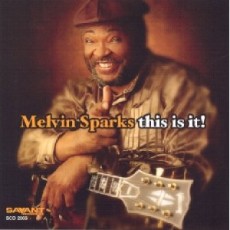
Daily Dose Of Jazz…
Melvin Sparks was born on March 22, 1946 in Houston, Texas. He got his first guitar when he was eleven and two years later he was sitting in with B.B. King. By 1963 he had joined the “Upsetters”, an R&B show band that backed Little Richard, Sam Cooke and other big names. Following this he did a year stint with Jack McDuff from 1966-67, then became quite in demand for his ability to improvise.
Sparks released his first album as a leader on Prestige in 1970 followed by a number of recording dates for the Prestige and Savant record labels and also appeared as a sideman and guest artist on several recordings with musicians including Lou Donaldson, Houston Person, Jimmy McGriff, Hank Crawford, Charles Earland, Sonny Stitt, Leon Spencer and Johnny Hammond Smith.
His Grant Green influenced guitar style placed him firmly in the soul jazz, hard bop and jazz blues genres. Melvin Sparks died on March 13, 2011 in Mount Vernon, New York from complications from diabetes.
More Posts: guitar
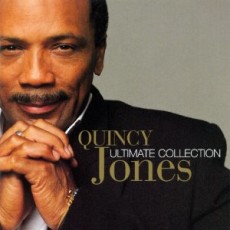
Daily Dose Of Jazz…
Quincy Delight Jones, Jr. was born on March 14, 1933 in Chicago, Illinois. When he was ten, his family moved to Bremerton, Washington, a suburb of Seattle. He first fell in love with music when he was in elementary school, and tried nearly all the instruments in his school band before settling on the trumpet. While barely in his teens attending Garfield High, Quincy befriended then-local singer-pianist Ray Charles and the two youths formed a combo, eventually landing small club and wedding gigs.
At 18, the young trumpeter won a scholarship to Berklee College of Music in Boston, Massachusetts but dropped out abruptly when he received an offer to go on the road with bandleader Lionel Hampton. The stint with Hampton led to work as a freelance arranger and settling in New York, throughout the 1950s he wrote charts for Tommy Dorsey, Gene Krupa, Sarah Vaughan, Count Basie, Duke Ellington, Dinah Washington, Cannonball Adderley and Ray Charles.
In 1964 Quincy won his first Grammy for Best Instrumental Arrangement of “I Can’t Stop Loving You”, in 1968 he won his second Grammy for Best Instrumental Performance with “Walking In Space” and that same year along with his songwriting partner Bob Russell became the first African Americans to be nominated for an Academy Award for Best Original Song for “The Eyes Of Love” and he became the first African American to be nominated twice within the same year when for Best Original Score for the 1967 film In Cold Blood.
His firsts would continue in 1971 when named musical director/conductor of the Academy Awards ceremony, being first to win the Academy’s Jean Hersholt Humanitarian Award, and He is tied at 7 with sound designer Willie D. Burton as the most Oscar-nominated African American.
His musical achievements are too numerous to list as they span the gambit from film scores such as The Pawnbroker, In The Heat of the Night, The Italian Job, MacKenna’s Gold, The Getaway and The Color Purple to his jazz works “Body Heat” and “Big Band Bossa Nova” from which Soul Bossa Nova was used in the Austin Powers movies to his crowning glories with Miles Davis last release “Live at the Monteux Jazz Festival”, his work with Michael Jackson’s “Thriller” and the charity song “We Are The World”. He continues to produce, conduct, arrange and compose.
More Posts: drums,french horn,piano,synthesizer,trumpet,vocal
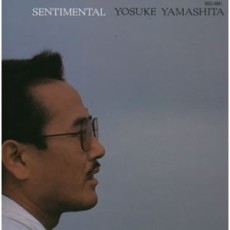
Daily Dose Of Jazz…
Yōsuke Yamashita was born February 26, 1942 in Tokyo, Japan. He first began to play piano professionally at the age of 17 in 1959 and attended the Kunitachi College of Music from 1962 to 1967. It was during his college matriculation that he released his first recording in 1963, becoming a pioneer of avant-garde and free jazz.
In 1969, Yosuke formed the Yosuke Yamashita Trio, which has been through various incarnations, each introducing and highlighting the skill of the new member. In the 1980s, Yosuke formed the “New York Trio” with bassist Cecil McBee and drummer Pheeroan akLaff.
In 1994 he was invited to perform at the 50th anniversary concert of the Verve jazz label at Carnegie Hall. Yamashita then moved into film scoring in 1998, scoring “The Girl Of The Silence”, Dr. Akagi”, “Inflatable Sex Doll of the Wastelands” and the Shohei Imamura film “Kanzo Sensei”, earning him the “Minister of Education Award,” amongst others.
As an educator he has been a visiting professor of music at Senzoku Gakuen College of Music, Nagoya University of Arts and the Kunitachi College of Music in addition to published work on improvisation and music. He has been nominated for the Japanese Academy Prize for Outstanding Achievement in Music.
Yōsuke Yamashita, jazz pianist, composer, essayist and writer has been praised by critics for his unique piano style and in 2003 he was conferred the Imperial Medal of Honor by the Japanese government for his contributions to the arts and academia. He continues to perform and record.
More Posts: piano

